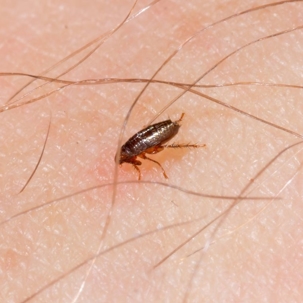Can Fleas Live On Humans?
Fleas are ectoparasites that primarily infest animals, such as dogs and cats, but they can occasionally bite and feed on humans. While fleas are adapted to thrive on the blood of their preferred hosts, they may opportunistically bite humans when other hosts are unavailable. However, fleas do not typically establish long-term infestations on humans because we lack the dense fur and suitable environment that animals provide.
When a flea bites a human, it can cause skin irritation, itching, and discomfort. Flea bites on humans often appear as small, red, itchy bumps and can occur on various parts of the body, especially in areas where clothing is tight. These bites are typically not a significant health concern for most people, but they can be more problematic for individuals with allergies or sensitivities.
Even though fleas may bite humans, they prefer their natural hosts. If you suspect a flea infestation in your home, it is more likely to originate from pets or wildlife. In such cases, thorough flea control measures, including treating pets, washing bedding, and using insecticides, are necessary to eliminate the infestation and prevent future occurrences. If you experience persistent discomfort from flea bites or suspect an infestation, consulting with our pest control professionals or a healthcare provider for guidance is advisable.
Can Humans Get Fleas?
Humans can get fleas through several means, and understanding these potential sources of infestation is essential for effective prevention and control. Here are the primary ways humans might get fleas:
- Pets: One of the most common ways humans get fleas is through their pets, such as dogs and cats. Fleas often infest animals and can easily jump onto humans when they come into contact with infested pets. Regularly checking and treating pets for fleas is a crucial preventive measure.
- Wildlife: Fleas can also be transmitted to humans through encounters with wildlife, like squirrels, raccoons, or rodents, which can carry fleas. People who live in areas with abundant wildlife may be at a higher risk of flea infestations.
- Infested Environments: Humans can pick up fleas from environments where the pests are present. Fleas can hide in carpets, rugs, bedding, and upholstered furniture. If someone visits or stays in a location with a flea infestation, they may unknowingly carry fleas back to their own home.
- Used Furniture or Clothing: Fleas can be present on used furniture, clothing, or bedding items. When purchasing or acquiring secondhand items, especially from sources where hygiene may be uncertain, such as thrift stores or garage sales, there is a risk of introducing fleas into your home.
- Outdoor Activities: Engaging in outdoor activities, such as hiking or camping, can expose individuals to fleas that may be present in grassy or wooded areas. These fleas can attach to clothing and, subsequently, to the person.
- Human-to-Human Transfer: While less common, fleas can be transferred from person to person in rare cases. This typically occurs when individuals with flea infestations in their homes or on their bodies come into close contact with others.
To prevent getting fleas, it's important to take several precautions. Regularly check and treat pets for fleas, keep your home clean, vacuum frequently, and wash bedding and pet bedding regularly. When acquiring used items, inspect them carefully, and consider washing or treating them before bringing them into your home. Additionally, take preventive measures when spending time in flea-prone outdoor areas, such as wearing long clothing and using insect repellents. If you suspect a flea infestation, it's advisable to seek professional pest control assistance to effectively eliminate the problem.
Can Fleas Survive On Humans?
Fleas are adapted to infest animals, primarily dogs and cats, and they are not well-suited for long-term survival on humans. While fleas may occasionally bite and feed on human blood, they do not typically establish a permanent or sustainable infestation on humans. There are a few key reasons for this:
- Lack of Ideal Environment: Fleas thrive in environments with certain conditions, such as dense fur or hair, which provides protection and facilitates reproduction. Human skin does not offer the same ideal environment for fleas to lay eggs and complete their life cycle.
- Different Host Preference: Fleas have evolved to prefer the blood of their natural hosts, which are usually animals. While they may bite humans if no other hosts are available, humans are not their primary choice.
- Limited Reproduction: Fleas require a host for mating and reproduction, and human blood alone may not support their reproductive cycle as effectively as the blood of their preferred animal hosts.
- Grooming and Hygiene: Humans are more likely to notice and respond to flea bites, leading to grooming and hygiene practices that may deter fleas from remaining on the human body.
While fleas may not establish a long-term presence on humans, they can still bite and cause skin irritation and discomfort. Flea bites on humans often result in itchy, red bumps. In cases of severe infestations in a household with pets, humans may experience more frequent flea bites.
If you suspect that you have been bitten by fleas or are experiencing discomfort from flea bites, it's essential to address the underlying infestation in your home, which is likely originating from your pets or the environment. Treating your pets for fleas and implementing effective flea control measures in your living spaces can help eliminate the problem and prevent further infestations.

